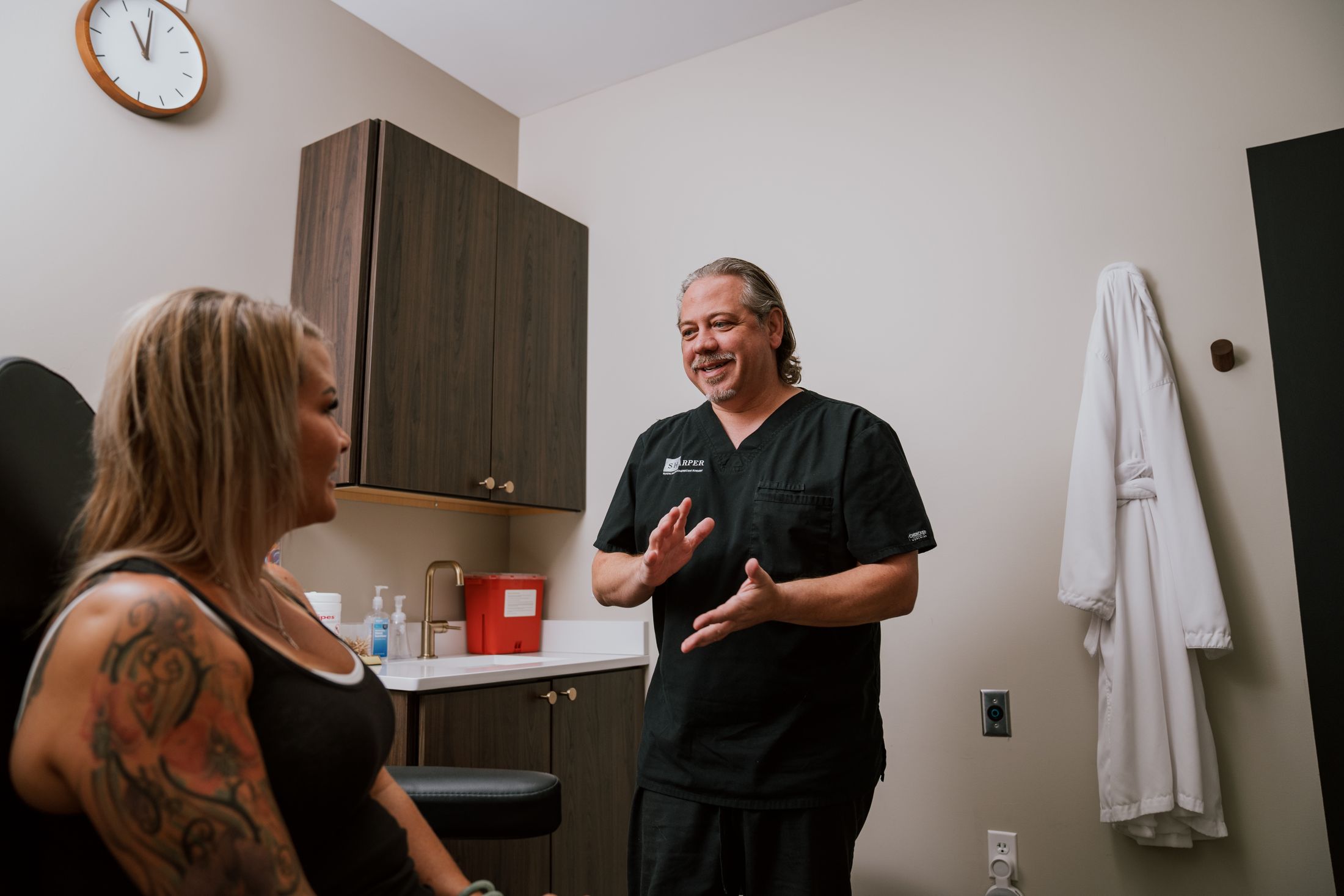- You will be sent home in a surgical bra. This should be worn night and day for 1 month, but may be removed for showering. After this point, you may wear your own bra. You should NOT wear an underwire bra for 6 weeks after your surgery because we do not want a hard surface pushing against the incisions.
- The bra can be washed in the washer then line dried.
- Cover the incisions with gauze, Light Days feminine napkins or nursing pads, allowing the bra to hold them in place. This is recommended as long as there is drainage, and to prevent the elastic of the bra from irritating the incisions.
- You may shower 24 hours post-surgery. Do NOT submerge the incisions for at least 6 weeks. Baths, hot tubs and swimming can be resumed once all areas are completely healed. NEVER use hot pads on breasts, burns can occur easily. Use a hair dryer set on a cool setting and using your hand to check the temperature of the air striking the wound area is helpful.
- Driving may be resumed once one’s reaction times, reflexes, and abilities are back to “normal”. One cannot drive while taking narcotic pain relievers. This usually requires up to 10 to 14 days for most people to be safe behind the wheel.
- Don’t be surprised if you notice an onset of thick yellow drainage from your incision 10 to 14 days after your surgery. This represents liquefied fat cells, not pus, and is not at all unusual. If this occurs, cover the area with dry gauze until the drainage stops.
- Avoid heavy lifting or heavy use of the arms of over 10 pounds for 6 weeks after surgery. Early ambulation is encouraged. One should not elevate one’s pulse or blood pressure for the first 2 weeks to prevent bruising or swelling.
- After 2 weeks, one can increase one’s pace in walking but should not resume jogging, aerobics, or high impact activities, etc. for 6 weeks post-op.
- Please leave the steri-strips on the incisions as long as possible; eventually they will come off by themselves. This will help prevent the scar from widening.
- The sutures that were used are absorbable. We will snip off the knots during a post-op visit.
- To avoid wound healing problems and disruption of wounds, one needs to be mindful of one’s activities. Be aware that it takes 42 days for most wounds to achieve 70% of the strength of intact skin. Even though you may feel “healed” in 2-4 weeks, the wounds are not as strong as you think.
- It is not uncommon that an occasional dissolving suture will surface along the wound presenting a small open area. This is frequently misinterpreted as “infection.” Removal of the offending suture will usually result in rapid healing. We will do this for you as needed in the office.
- All pain medication can cause nausea when taken on an empty stomach. Please take every dose with food to avoid this problem. A choice of pain medications has been provided. Please choose one and do not change unless a problem occurs with a particular medication or you wish to “step down” to a lesser strength narcotic. ALL pain medications cause constipation. Please use laxatives or stool softeners as needed.
- Temperature elevations to 100-101 degrees in the first 2-4 days are usually due to the collapse of the small air passages in the lungs after general anesthesia. This usually does NOT represent infection in most cases unless accompanied by other signs and symptoms such as redness, unusual drainage, increasing pain, etc. This is usually improved with deep breaths, increased activity and occasionally forcing a cough to re-expand the lungs.
- Resumption of sexual activity is dictated by one’s physical comfort level. Contact of the surgical area with oral secretions or body fluids is not recommended until all areas are well-healed.
- Early and frequent walking is necessary to prevent the risk of blood clots that could pass to the heart or lungs resulting in a pulmonary embolus. Significant pain and swelling in the leg or sudden onset of shortness of breath are very important symptoms that demand IMMEDIATE attention.
- Activity should be gauged to how one feels. Early ambulation is strongly encouraged. More strenuous activity can resume in 2 weeks. Elevation of the heart rate and blood pressure should be avoided for the first 2 weeks to minimize swelling and bruising. After 2 weeks, one can increase one’s pace in walking but should not resume jogging, aerobics or high impact activities for at least 6 weeks to minimize swelling and bruising.
- If you develop increased redness, warmth, pain, or temperature in excess of 101 degrees, please call our office and have your pharmacy’s phone number available.
If you have any questions that our office has not covered please call.

